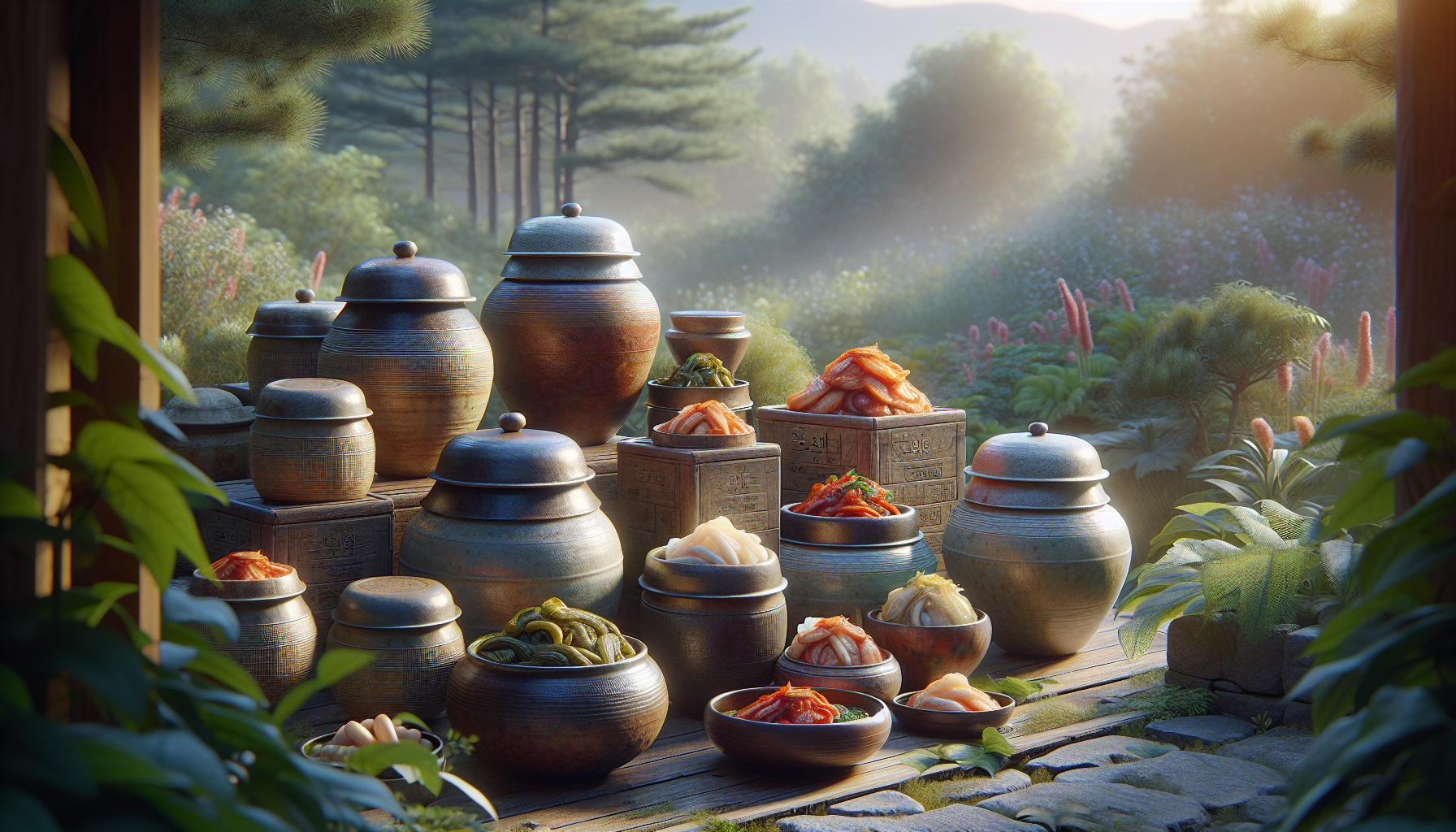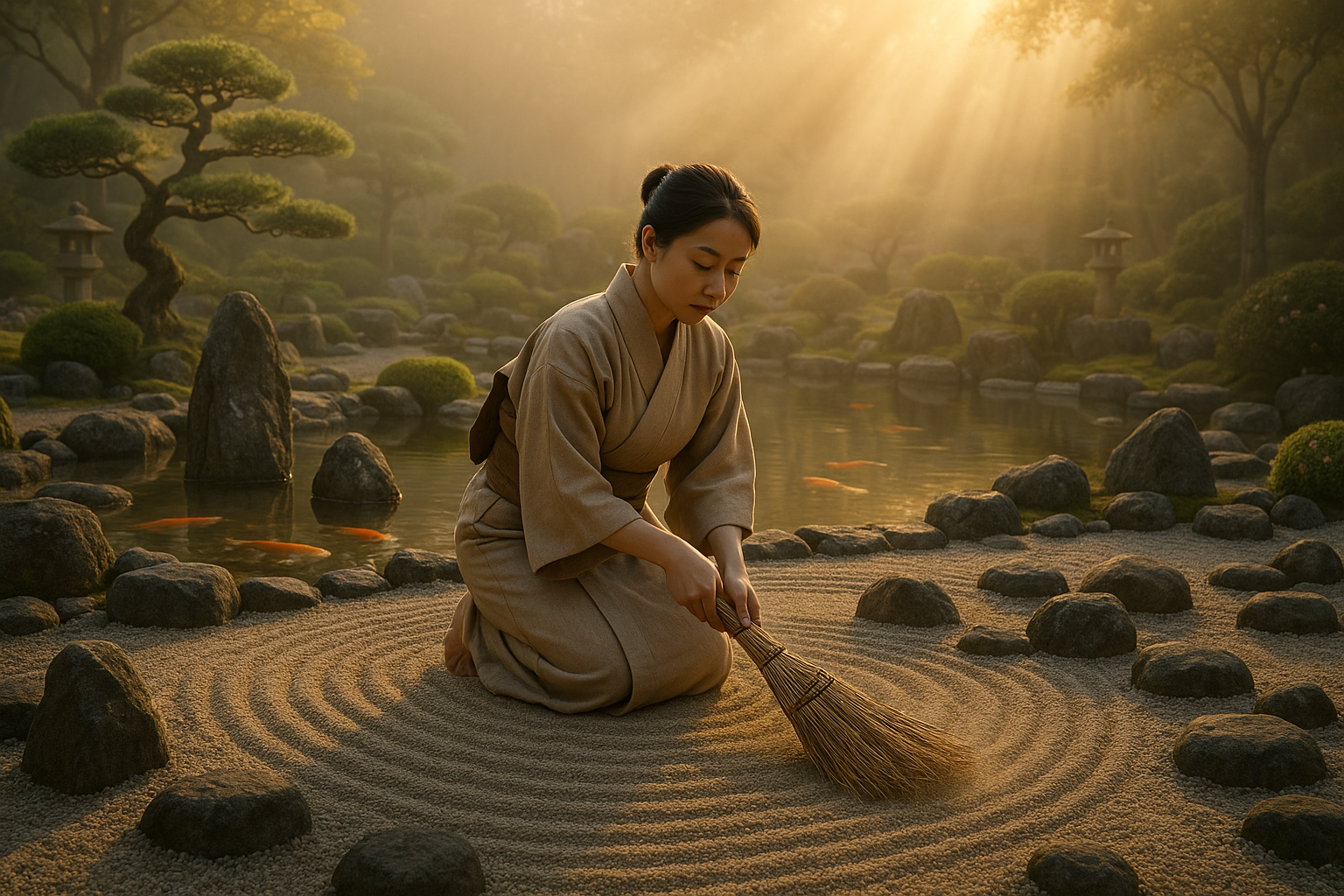In a world where convenience often trumps tradition, the art of food preservation has become an underappreciated skill, relegated to the annals of history or the shelves of artisanal shops. Yet, as the global culinary scene increasingly embraces authenticity and sustainability, there is a burgeoning interest in revisiting age-old techniques that once formed the bedrock of food culture. Among these, the traditional Korean method of using Onggi vessels for fermentation and storage stands out as a testament to the ingenuity and resourcefulness of ancient societies. These unassuming clay pots, with their porous texture and rustic charm, have been instrumental in Korean households for centuries, acting as both functional kitchenware and cultural heirlooms. 🏺
Imagine a method of preservation that not only extends the life of your food but enhances its flavors, deepens its nutritional value, and connects you with generations past. Onggi jars have played this role in Korean culture, serving as vessels for the fermentation of kimchi, doenjang (soybean paste), and gochujang (red chili paste), among other staples. These traditional practices not only reflect a deep understanding of the natural fermentation process but also demonstrate a harmonious relationship with the environment. In today’s age of industrialized food production and waste, the simplicity and effectiveness of Onggi provide a refreshing alternative, inviting us to pause and reflect on how we store and savor our food.
Delving into the world of Onggi and Korean fermentation is like embarking on a sensory journey that encompasses taste, touch, sight, and even sound. It is a celebration of patience and process, a dance with the microscopic organisms that transform raw ingredients into complex culinary masterpieces. The porous nature of Onggi allows for a natural exchange of gases, facilitating the perfect environment for fermentation. As a result, the flavors developed are rich and nuanced, offering a depth that is difficult to replicate with modern techniques. This artisanal process is not just about preservation; it’s about transformation—both of the ingredients and the cook.
In this article, we will explore the multifaceted world of Onggi, starting with its historical significance and the cultural traditions it upholds. We will delve into the science behind fermentation, unraveling how these humble clay pots create the ideal conditions for beneficial bacteria to thrive. From there, we will guide you through the process of selecting and caring for your own Onggi, ensuring it serves you for years to come. Whether you’re a culinary enthusiast eager to expand your repertoire, or a curious soul interested in sustainable practices, understanding the art of Onggi promises to enrich your appreciation of food and tradition.
So, join us as we uncover the secrets of Onggi, a symbol of culinary artistry that bridges the gap between past and present. Let this exploration inspire you to embrace a slower, more mindful approach to food, where every meal becomes a testament to the flavors of tradition and the stories they carry. 🍲
Understanding Onggi: The Ancient Korean Fermentation Pot
The art of food preservation has been a cornerstone of human civilization, allowing societies to sustain themselves through harsh seasons and ensure a consistent food supply. In Korea, one of the most traditional and fascinating methods of food storage is through the use of onggi pots. These large, earthenware vessels are not just containers; they are crucial instruments in the fermentation process that defines Korean cuisine. Onggi pots have been used for over 5,000 years, a testament to their efficacy and cultural significance. Their porous nature allows for air circulation, which is essential for fermentation. This makes onggi ideal for preserving foods such as kimchi, soy sauce, and gochujang, all staples of Korean cuisine.
The process of making an onggi is an art in itself. Skilled artisans craft these pots by hand, using natural materials that contribute to their unique properties. The clay used is carefully selected for its mineral content and is often locally sourced. Once shaped, the pots are glazed with a natural ash glaze and fired at high temperatures in traditional kilns. This process gives onggi their distinctive brown color and enhances their durability and functionality. The entire creation process is deeply rooted in Korean tradition and reflects the country’s rich cultural heritage.
The science behind onggi fermentation is fascinating. The porous structure of the pots allows gases produced during fermentation to escape while preventing the entry of harmful bacteria. This natural aeration is crucial for maintaining the right balance of microorganisms, which in turn influences the flavor and texture of the fermented food. Onggi fermentation is not just about preserving food; it’s about enhancing its nutritional value. Fermented foods are rich in probiotics, which support digestive health and boost the immune system. The traditional use of onggi pots highlights a sustainable way of living, emphasizing natural materials and processes. 🏺
The Role of Fermentation in Korean Cuisine
Fermentation plays a pivotal role in Korean cuisine, contributing to the distinctive flavors and nutritional profiles of many traditional dishes. It is not just a method of preservation; it is an integral part of Korean culture and identity. Kimchi, one of the most well-known Korean foods worldwide, owes its unique taste and health benefits to the fermentation process. Fermented foods are celebrated in Korea for their umami flavor, depth, and complexity, which are achieved through the meticulous balance of ingredients and controlled fermentation conditions.
The types of foods fermented in Korea are diverse, ranging from vegetables and beans to fish and grains. Each fermented product has a specific use in Korean cooking, enhancing the flavor profile of dishes and contributing to their nutritional value. For example, doenjang (fermented soybean paste) is a staple ingredient in Korean stews and soups, while ganjang (soy sauce) is a versatile seasoning used in various dishes. These fermented condiments are not just side items but are central to Korean culinary practices.
Fermentation in Korea is also a social and communal activity. Families often come together during the kimjang season to prepare kimchi for the winter months. This tradition is more than just a food preparation process; it is a cultural event that strengthens community bonds and passes down culinary knowledge from one generation to the next. The communal aspect of fermentation highlights its importance beyond just food preservation, embedding it deeply into the social fabric of Korean life. To further explore the art of fermentation, check out this informative video from the channel Korean Fermentation Art.
Comparing Onggi with Modern Fermentation Methods
While onggi pots are traditional, modern fermentation methods have also evolved, offering new techniques and equipment for preserving food. However, the traditional use of onggi remains popular due to its unique advantages. Let’s compare these methods to understand their differences and benefits.
| Aspect | Onggi Fermentation | Modern Fermentation |
|---|---|---|
| Material | Natural clay, hand-crafted | Plastic, glass, metal |
| Airflow | Porous structure allows natural aeration | Controlled environments, often airtight |
| Cultural Significance | Deeply rooted in Korean tradition | Widely used globally, less cultural attachment |
| Environmental Impact | Sustainable, uses natural materials | Varies, can involve non-biodegradable materials |
| Nutritional Benefits | Rich in probiotics, enhances food flavors | Similar benefits, but depends on method used |
As shown in the table, onggi fermentation offers unique benefits, particularly in terms of its natural materials and traditional significance. Modern methods provide convenience and control, making them suitable for large-scale production. However, many enthusiasts and food connoisseurs appreciate the traditional taste and cultural heritage associated with onggi fermentation. The choice between these methods often depends on personal preferences, available resources, and the specific types of food being fermented.
Despite advancements in technology, the allure of onggi pots remains strong. They embody a philosophy of harmony with nature, emphasizing the use of natural resources and processes that have been perfected over millennia. Onggi pots are more than just tools; they are a symbol of Korean resilience and ingenuity, capturing the essence of a culture that values both tradition and innovation. 📜
Integrating Onggi Fermentation into Modern Lifestyles
Incorporating onggi fermentation into modern lifestyles can be a rewarding experience, offering both health benefits and a deeper connection to cultural traditions. As interest in traditional and artisanal food preparation methods grows, more people are turning to onggi pots to explore the art of fermentation. Whether you are a culinary enthusiast, a health-conscious individual, or someone interested in sustainable living, onggi fermentation can offer unique advantages.
- Choose the right size of onggi pot based on your storage needs.
- Ensure that the onggi is placed in a cool, shaded area to maintain optimal fermentation conditions.
- Experiment with different ingredients and fermentation times to discover your preferred flavors.
As you delve into the world of onggi fermentation, consider joining communities or workshops dedicated to traditional Korean cooking. These platforms offer valuable insights and allow you to connect with others who share a passion for fermentation. Additionally, many resources are available online, including instructional videos, blogs, and forums where you can learn from experienced practitioners. Incorporating onggi fermentation into your routine is not just about making food; it’s about embracing a lifestyle that honors tradition, health, and sustainability. 🍲
Watch this video from the Korean Cuisine Channel to get started with your onggi fermentation journey.

Conclusion
Preserving food through fermentation is a timeless art that has been an integral part of Korean culture for centuries. At the heart of this practice lies the Onggi, a traditional Korean earthenware pot, renowned for its ability to maintain the perfect environment for fermentation. Throughout this article, we have explored the multifaceted world of Onggi, delving into its history, cultural significance, and practical applications in modern times.
To begin with, Onggi is not just a vessel for storage; it is a cultural artifact that embodies the ingenuity and resourcefulness of Korean heritage. These pots are crafted using a specific type of clay that ensures breathability and optimal temperature regulation, making them ideal for the fermentation of staples like kimchi, soy sauce, and various pastes. This unique ability to facilitate the fermentation process while maintaining the flavors and nutritional benefits of food highlights the profound wisdom embedded in traditional Korean practices.
The article further elaborates on the science behind fermentation and the role of Onggi in preserving the probiotic-rich, health-boosting properties of fermented foods. Fermentation not only enhances the shelf-life of foods but also enriches them with beneficial bacteria, which are known to support gut health and bolster the immune system. As the world becomes more conscious of health and wellness, these age-old practices are gaining renewed interest and appreciation.
Moreover, Onggi-making itself is an art form that requires skill and dedication. The potters who create these vessels are custodians of a dying tradition, preserving techniques passed down through generations. In an era dominated by industrial processes, the handcrafted nature of Onggi serves as a reminder of the value of artisan skills and sustainable practices. This craftsmanship not only supports local economies but also keeps cultural traditions alive.
In contemporary society, where convenience often takes precedence over tradition, the resurgence of interest in Onggi and fermented foods represents a shift towards more mindful living. People are increasingly recognizing the importance of sustainable practices and the benefits of returning to natural methods of food preservation. By embracing the Onggi tradition, individuals can take a step towards reducing their environmental footprint while enhancing their dietary practices.
The significance of Onggi and fermented foods extends beyond the realm of culinary arts; it fosters a connection to the past, encouraging us to appreciate the cultural richness and wisdom of our ancestors. As you reflect on the insights shared in this article, consider how you might incorporate these traditional practices into your own life. Whether it’s experimenting with fermentation at home or supporting local artisans, there are numerous ways to engage with and preserve this invaluable heritage.
In conclusion, the art of food preservation using Onggi is a testament to the enduring relationship between humans and nature. It teaches us the importance of patience, respect for tradition, and the benefits of sustainable living. As we look towards the future, let us not forget the lessons of the past. Share this knowledge with others, explore the possibilities of fermentation, and cherish the cultural legacy embodied in each Onggi pot. 🌿
Join the conversation by leaving a comment below or sharing your own experiences with Onggi and fermentation. Encourage others to explore this fascinating world and help keep these traditions alive. For those interested in learning more about the science and art of fermentation, here are some resources to explore: [Korean Cultural Heritage](https://www.koreanheritage.org), [Fermentation Science Institute](https://www.fermentationscienceinstitute.org), and [Cultural Insights from National Museum of Korea](https://www.museum.go.kr).
Let’s celebrate the timeless art of Onggi and fermentation by sharing this article with friends and family. Together, we can preserve not only our food but also a rich cultural tradition that has so much to offer in today’s world. 🌏




